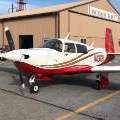Straight in Final
Straight in final at untowered airports
78 members have voted
-
1. Do you fly straight in finals at untowered airports?
-
Yes, straight in final is my preferred entry1
-
Yes, but only on an instrument approach12
-
Yes, but only traffic permitting58
-
No7
-
-
2. If you are on a straight in final and there's conflicting traffic in the pattern:
-
Proceed straight in and let them avoid me2
-
Tell traffic to extend their downwind1
-
Do S turns or 360 on final to let traffic ahead3
-
Sidestep to upwind and join traffic pattern on crosswind26
-
Turn away and go out to enter downwind on a 4537
-
I don't fly straight ins to avoid this9
-
-
3. If you are on downwind or base and there is conflicting traffic on straight in final:
-
Keep it tight and cut ahead2
-
Widen out and get behind56
-
Tell them on radio that you're in the pattern and they need to resequence13
-
Make S turns or 3601
-
Leave the pattern and reenter6
-
I'm the one flying straight ins to avoid this0
-


Recommended Posts
Join the conversation
You can post now and register later. If you have an account, sign in now to post with your account.